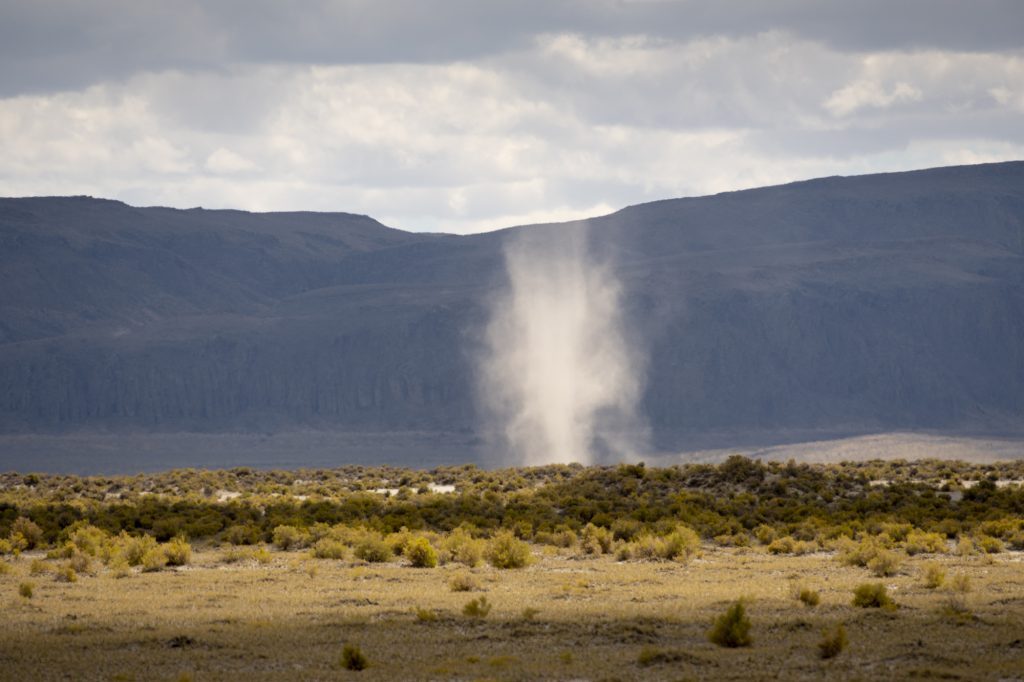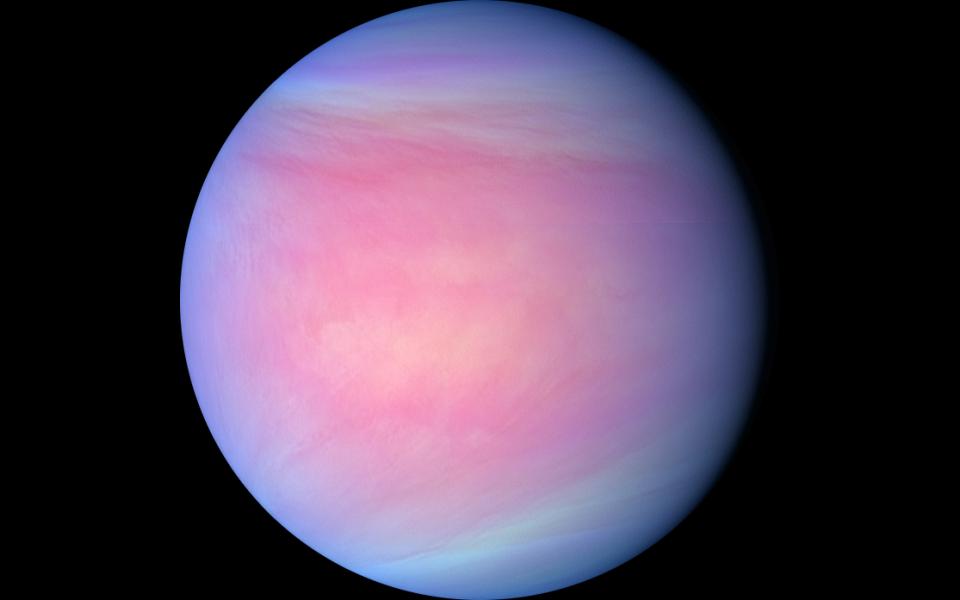Today is the Global Climate Strike, but we’re here to bring you science – including climate science. Let’s look at our world, and then look away to the clouds on Venus and the dust devils on Mars.
Links
Global Climate Strike
- GLOBAL CLIMATE STRIKE → SEP. 20–27 (org page)
- ‘This could only be a fantasy’: Greta Thunberg on sparking global climate strike movement – video (The Guardian)
- Global climate change strike – live updates (CBS News)

Mars dust devils
- Drones probe terrestrial dust devils to better understand the atmosphere of Mars (EPSC)
- The Devils of Mars (NASA Science)
- This is a Dust Devil… on Mars (Universe Today)
- Dust Devil Tracks on Mars (Wikipedia)

Venus and its amazing clouds
- Venus puts on variety show among its cloud-tops (EPSC)
- Venus Takes Centre Stage in October 2020 Observation Campaign(EPSC)
- Could Venus have been habitable? (EPSC)
- Venus (Wikipedia)
- Venus Overview (NASA)
Transcript
Today is a pretty weird day to be sitting here streaming an astronomy news show. All across the world, workers are walking out of their offices and students are walking out of their classrooms as the stand for our environment. Today is the Global climate strike, but I am making the choice to work so I can talk to you about science – including about climate science. I’m going to get to the rest of the solar system in a moment, but I want to take this moment to talk to you about our Earth. I still remember where I was the moment I realized the full reality of Climate Change. I was in my office at Kalbach Publishing holding an issue of either Science or Nature magazine, and I had just read two articles. One was a theoretical model showing how the weather patterns of our world would be radically disrupted, leading warmer equatorial regions and significantly colder European and Pacific Northwest winters if our oceans massive north – south currents change or fade away. In another article, scientists were monitoring the changes in salinity in our ocean that are being triggered by the influx of freshwater as our worlds glaciers melt into the sea. That article discussed out too much freshwater could shut down those ocean currents our climate relies on to carry hot water away from mid latitudes, to get England and Vancouver temperate climates. I was reading these articles back in the 2002-2003 school year, and for about a month, anyone who would listen got to hear me have a fearful rant about climate change. Pretty quickly, no one wanted to hear it any more. It was too big a problem. There was nothing we could do… And after all, it couldn’t be that serious or our governments would be trying to do something to prevent this fate.
This year we are seeing the definitive change in our world. While the global temperature may only be rising a couple of degrees, the fluctuations about that average are where we need to be concerned. If you, like me, had a remarkably mild summer, the heat we avoided had to go somewhere else, and that somewhere else was the Arctic ocean where shipping lanes were open between places that no one ever anticipated would become polar port cities. We also see that heat building in the oceans, where category 5 hurricanes are becoming the norm rather than an exception. While the global average temperature is only rising a small amount, local changes can be tens of degrees up or down, and can vary with the season.
Our environment is a finicky system of heat flows and heat syncs, and it includes gas processing systems that range for trees to cows. Like any system, it can breakdown in a lot of different ways, and when it breaks, it’s often possible to patch it up in weird ways. Any of you who have ever tried to make candy, make a pie crust, or bake anything at altitude know that tiny changes in ingredients and temperatures can radically change the final product, and factors such as the color of a cookie sheet can make or break a batch of goodies. Our planet and its life is sensitive to all these same kinds of changes, and we can just feed our mistakes to the dog and start over with Earth.
And right now, our planet’s climate is so advanced in its decline, that if it were a car, I’d be looking to replace it instead of fix, and before you brush that off, realize I’m someone who drives a 22 year old car, because my Jeep still hasn’t hit the stage of being too broken to not just fix. And before you at me about driving an old car, I only drive about 2000 miles a year, so it is better to drive an old car than pay the environmental penalty of building a new car.
Human impacts on our Earth range from pollution to the use of pesticides and weed killer, to the clear cutting of land, to the transportation of species and diseases between continents. All these things have worked together to kill life, from bugs to birds, and to alter the environment to make what life remains have a harder time thriving. We did this. And it looks like we are in a state of environmental decline we just can’t recover from through our individual efforts.
When I first planned out what to say today, I was going to explain the consequences of climate change on our economy and population centers. But it’s just not worth numerating all those concerns one more time.
What we need is change – change that is more than what we as individuals can do. We need the governments of the world to implement radical policies, and we need companies to reconsider how we work. As people, we can recycle, not have children, not have meat, and not drive cars as much as we want, but our actions aren’t enough. As the UN considers climate policy next week, we need to make our voices known and say – we need to put the environment ahead of the economy, because it’s better to leave our children a livable planet than a large inheritance.
Okay, that was a lot. Let’s regroup, and look at some new science.
The European Planetary Sciences is winding down, but we still have a few more stories to tell.
Our first story takes us to Venus. New results from the Akatsuki spacecraft detail fine features in Venus’s complex cloud cover and may help us finally understand how Venus’s atmosphere rotates radically faster than the planet itself. This Japanese probe is currently orbiting Venus studying the top most clouds, which are driven by winds that often reach 355 km / hour and can even support gusts of 700 km / hour. It is also looking at how the two hemispheres of Venus have radically different weather patterns. Authors of this study, led by Takeshi Horinocuchi, postulate that a weird dark molecule in the atmosphere that strongly absorbs ultraviolet radiation from the Sun. They also observe amazing wind patterns, with high-speed poleward winds blowing on the dayside of Venus, and equatorward winds blowing on the nightside. Since Venus is a remarkably slow rotator, with its day lasting 116 days, these circulation patterns may hint and what we will someday find on tidally locked worlds orbiting alien stars.
From Venus we bounce to Mars, where dirt devils are one of the most interesting phenomena. These spirals of wind are capable of picking up dust from the surface, and often leave behind dark paths in their wake. Dirt devils are scene all across mars and are known to raise dust into the atmosphere, where it acts as an insulator, helping prevent heat from radiating into space. What is unclear is just how much dust a dust devil can carry. While we can’t yet do weather chasing on Mars, we can do it here on Earth, and our own world’s dust devil’s may help us understand those found a world away. A team led by Ralph Lorenz has been flying small drones into dust devils found in Oregon to directly measure what kinds of pressures and velocities are occurring, and to sample the amount of dust getting lifted into the atmosphere. While this research is in the early days, it should be able to help us develop models for how Martian dust devils can lift material into the atmosphere in ways that are both beautiful and planet warming.


 We record most shows live, on Twitch. Follow us today to get alerts when we go live.
We record most shows live, on Twitch. Follow us today to get alerts when we go live.